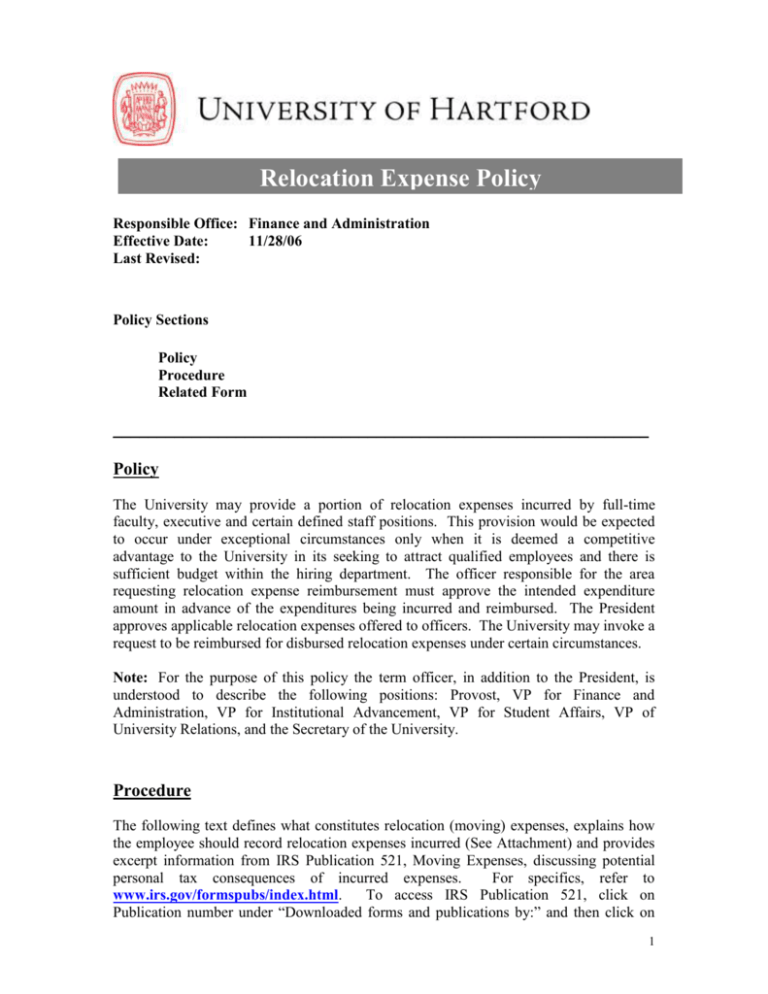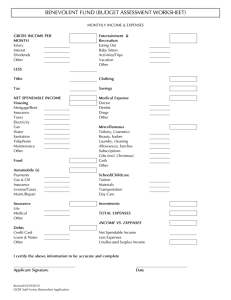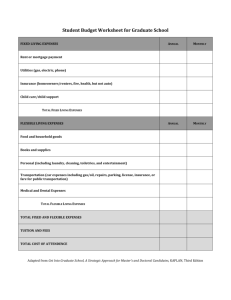Relocation Expenses - University of Hartford
advertisement

Relocation Expense Policy Responsible Office: Finance and Administration Effective Date: 11/28/06 Last Revised: Policy Sections Policy Procedure Related Form _____________________________________________________________ Policy The University may provide a portion of relocation expenses incurred by full-time faculty, executive and certain defined staff positions. This provision would be expected to occur under exceptional circumstances only when it is deemed a competitive advantage to the University in its seeking to attract qualified employees and there is sufficient budget within the hiring department. The officer responsible for the area requesting relocation expense reimbursement must approve the intended expenditure amount in advance of the expenditures being incurred and reimbursed. The President approves applicable relocation expenses offered to officers. The University may invoke a request to be reimbursed for disbursed relocation expenses under certain circumstances. Note: For the purpose of this policy the term officer, in addition to the President, is understood to describe the following positions: Provost, VP for Finance and Administration, VP for Institutional Advancement, VP for Student Affairs, VP of University Relations, and the Secretary of the University. Procedure The following text defines what constitutes relocation (moving) expenses, explains how the employee should record relocation expenses incurred (See Attachment) and provides excerpt information from IRS Publication 521, Moving Expenses, discussing potential personal tax consequences of incurred expenses. For specifics, refer to www.irs.gov/formspubs/index.html. To access IRS Publication 521, click on Publication number under “Downloaded forms and publications by:” and then click on 1 Publ 521 Moving Expenses to highlight it and then click on Retrieve Selected Files. Then click on Pub 521 Moving Expenses again to retrieve the actual document. Expenses must be related to the start of work at the employee’s new job location. The IRS tax-related information provided within this document is not intended to be fully comprehensive. Therefore, the information provided should not be interpreted as sufficient information to the employee to replace the need for the employee to contact her/his personal tax accountant prior to filing the applicable year’s personal income tax return. Relocation Expenses Expenses that are deductible and non-taxable income to the employee (with no dollar limit on the deduction): -The cost of moving household goods and personal effects to the new residence, and -The transportation and lodging costs of moving the employee and family from the old residence to the new residence. These transportation and lodging costs are exclusive of meals or a mileage rate in excess of the standard mileage rate of $0.xx per mile for the 200x tax year. As an alternative to using the standard mileage rate, the employee can opt to use actual expenses for gasoline and oil purchased when traveling by personal car and in either case include the costs for tolls and parking fees. The employee should review the IRS Form 3903 each taxable year to determine the exact standard mileage rate to use. For the tax year 2005, the deductible amount is limited to 15 cents per mile for miles driven from January 1 through August 31, 2005 and 22 cents per mile for miles driven form September 1 through December 31, 2005. Beginning January 1, 2006, the standard mileage rate for the use of a personal car for moving purposes is 18 cents per mile. Examples of expenses associated with moving which may or may not be reimbursable to the employee, but are always not deductible and therefore taxable income: - Expenses of buying a new residence and selling the old residence. - Expenses of getting or breaking a lease from old residence. - Home improvements to help sell your old residence. - Loss on the sale of your old residence. - Meal expenses associated with the relocation. - Pre-move house hunting expenses. - Real estate transactions. - Temporary living expenses in the area of the new workplace. 2 - A standard mileage rate allowed that is in excess of the IRS guideline. As above, currently the allowable standard mileage rates for tax year 2005 is either 15 cents per mile or 22 cents per mile, depending on when in 2005 the miles were driven. Again, the standard mileage rate beginning January 1, 2006 is 18 cents per mile. Recording of Relocation Expenses Account Distribution: All expenses related to the move must be charged only to account #61600, Moving Expenses. Please use the University Relocation Expense Approval/Reimbursement form for items that require a payment by check by the University to third party companies such as the moving company, moving van or car rental company, and/or hotel/motel. This form also is to be used for all related relocation expenses to be reimbursed by the University directly to the employee. - The Relocation Expense Approval/Reimbursement form requires the following: - a copy of the related offer letter identifying the approved amount with the salary amount deleted. - a detail listing of expenses incurred and original supporting receipts. For each expense listed, identify its purpose, e.g., packing/moving of household goods, one-time move from old residence (city/state) to new residence (city/state) for transportation costs of the employee’s personal car at the standard mileage rate or for gasoline and oil, tolls/parking fees, lodging, pre-move house hunting expenses, meal expenses associated with the relocation, temporary living expenses in the area of the new workplace, etc. whether any of the above-mentioned expenses are considered deductible expenses and not taxable to the employee or non-deductible expenses and taxable to the employee should be determined by again referencing the Relocation Expenses section of this document on the bottom of page 1 continued on page 2; and, also by specific reference to the IRS Publication 521. the form requires the approval of the officer responsible for the department in which the new hire is to be employed. 3 Excerpted from IRS Publication 521, Moving Expenses are deductible if they meet two tests: - The distance test requires that the commuting distance from the old residence to the new job be 50 miles farther than the commuting distance was to the old job. Therefore, deductions for moves within the same general area and for job changes in the same general area are eliminated. - The time test requires the taxpayer to be employed at the new location for 39 weeks in the 12-month period following the move. In case of death, disability, discharge, or transfer that is not the fault of the employee, the time requirements are waived. Employer reporting of relocation expenses: - Deductible moving expenses an employer pays to a third party (e.g., to a moving company) and any services that an employer furnishes in kind to an employee in lieu of employee-incurred deductible moving expenses are not reported on the employee’s Form W-2. - Employer reimbursing an employee for deductible moving expenses must include the amount in Box 12 of the employee’s Form W-2 with Code P. This amount is not taxable income to the employee and not included on the employee’s applicable IRS 1040 Form. - Employer reimbursing an employee for non-deductible moving expenses must include the amount with the employee’s wages, salary, or other pay and report the total in Box 1, 3, and 5 of the employee’s Form W-2. This amount is taxable to the employee and should be included on the employee’s applicable IRS 1040 Form as a portion of adjusted gross income. In addition, the University is required to withhold income tax, social security tax, and Medicare tax on this amount. _____________________________________________________________ Related Form Relocation Expense Approval/Reimbursement Form 4




